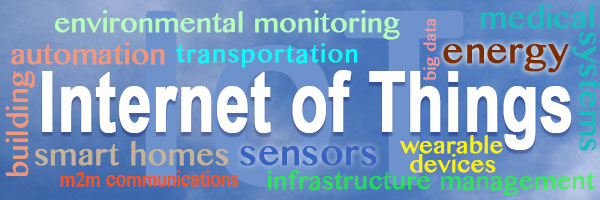Despite all the attention being given to the extraordinary opportunities promised by the Internet of Things, many software and technology vendors are still waiting for demand to match the predictions provided by analysts, press and their own PR campaigns.
Security concerns are the most common inhibitor to IoT initiatives, industry surveys suggest, but a number of other factors likely are getting in the way of IoT deployments as well.
If you were simply to read the latest market forecasts and executive surveys, you’d believe that the IoT revolution was well under way. The fact is, many organizations across a variety of industries are aggressively pursuing IoT strategies to improve product and service quality, streamline their operations, uncover new business opportunities, and gain a competitive advantage.
Misunderstandings Are Rife
However, a large proportion of these companies already were far down the IoT path before the “IoT” term was even coined. They were moving in that direction under the previous “machine-to-machine” moniker, which has been an important component of the manufacturing and logistics worlds for many years.
The M2M technology realm has been focused primarily on improving the operational efficiency of production, transportation and other related business disciplines.
Interestingly, only a handful of the companies that already have adopted M2M technologies and business processes have converted their investments into bigger IoT opportunities. Their reluctance reflects the broader market’s reluctance to fully embrace the IoT ideal.
First, many corporate decision makers mistakenly take the “IoT” term literally and are uncomfortable relying on the Internet to transmit sensitive data from their connected products because of obvious security concerns.
The truth is, “IoT” is simply shorthand for numerous networking methods that are already available but not yet fully developed — methods that will enable organizations to select the right purpose-built transmission technique for each technical and business use-case.
The second misnomer about IoT is that it is primarily a consumer-oriented phenomenon driven by marketing departments to create greater customer intimacy and insights. While this is certainly a prime motivation, the other operational benefits originally realized in the M2M world are also still in play.
So, rather than only replacing a tired, old M2M flag with a new IoT calling card, proponents of the IoT concept are attempting to add new layers of value.
Complications Set In
Ironically, by adding these new dimensions to the discussion, the debate about how to move forward with the IoT has become much more complicated. The M2M deployment questions could be answered more quickly, because they involved a smaller set of decision makers whose choices were viewed as more tactical than strategic until they produced significant results.
IoT initiatives require a wider cross-section of stakeholders, spanning from product design and manufacturing to marketing, sales and customer support. Agreeing on a unified IoT plan is the ultimate in silo-busting and decision-making by committee — and with so many constituencies to satisfy, analysis paralysis is not surprising.
Even after an organization comes to agreement about how it would like to pursue an IoT initiative, it then has to contend with an infinite array of technology and software piece-parts that have to be properly assembled and administered in order to achieve their objectives.
In past overhyped technology waves, corporate decision makers and IT organizations would be frustrated by immature products that failed to fulfill their vendors’ grandiose promises. In the IoT marketplace, there is plenty of powerful hardware and software to meet customer needs in almost every industry.
As a result, various IoT vendors are wallowing in the depths of Gartner’s trough of disillusionment on the hype cycle curve, while they wait for corporate executives to get more comfortable with the IoT idea and determine how they can define it to meet their own requirements and achieve their specific objectives.























































Social Media
See all Social Media